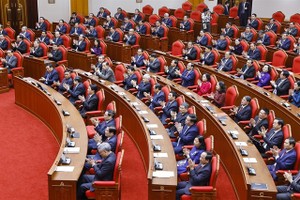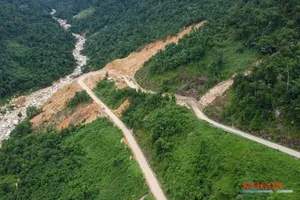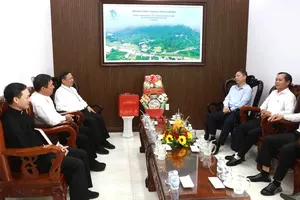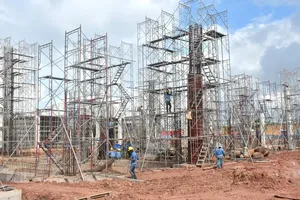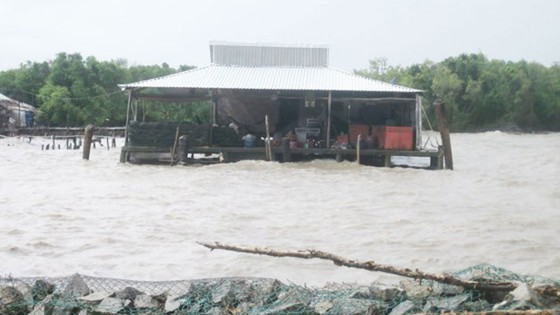
According to Mr. Thanh, Vietnam has a large scale dyke system with the total length of 9,300 kilometers including 6,400 river and 2,900 sea embankments. Most of these were built from soil so they are regularly damaged, quickly downgraded under influence of heavy rains, storms, high tide and southwest monsoon. In many places, dyke encroachment and illegal sand mining have posed hazards in case of powerful storms and water release by hydropower reservoirs.
The Mekong Delta has been the hardest hit region of landslide. From 2007 until now, riverside and coastal landslide has been on the rise seriously affecting the life of residents and negatively impacting sustainable socioeconomic development. The situation has been due to erratic weather, climate change and sea level rise.
In addition, sand exploitation in Tien and Hau rivers and excessive underground water exploitation have resulted in depression. In the meantime, the volume of silt deposits flowing into the Mekong Delta has strongly reduced as countries in the upper reaches of the Mekong River have increased building of hydropower reservoirs.
In the near future, the number of reservoirs in the river is planned to total 161 with the capacity of 101.9 cubic meters of water. At that time, silt volume to the Mekong Delta will drop to below 20 percent.
For the last many years, the State has paid attention to upgrading, fortifying and repairing the dyke system. However financial source limit has hindered the effort, so many dyke sections are unsafe amid the increasingly severe natural disasters.
The Mekong Delta has been assisted with thousands of billions of dong from the State budget and official development assistance (ODA) source to handle riverside landslide. However solutions have been asynchronously carried out. Some works apply technical solutions which neither suit local natural conditions nor follow regulations on design and construction standards. So they have briefly been damaged or failed to obtain set targets after being built.
Most of anti-landslide works have been implemented in damaged spots without long term radical plan for the entire river and canal system in the region.
Before 2014, about VND200-250 billion (US$8.64-10.81 million) were allocated to 19 provinces with the dyke length of 2,700 kilometers for dyke fortification a year. Since 2014, the funding has sharply fallen to only VND50 billion ($2.16 million) a year for the entire 2,700 kilometers of dyke and it does not meet demand.
Some people say that the Red River Delta has not seen big flooding for a long time so there is no need to continue spending on fortifying the Red River dyke system. In response, Mr. Thanh said it is true that the Red River Delta has not seen big flooding after the flood in 2002. In addition there have been big hydropower reservoirs in the upper reaches of the river. Hence some have been subjective.
According to Mr. Thanh, it will be very dangerous if heavy flooding occurs. Hydropower reservoirs in the upper reaches will be unable to regulate floodwater but even release floodwaters to ensure safety.
The Red River dyke system is protecting 15,000 square kilometers including the capital city of Hanoi with the total population of 20.2 million people. If a breach takes place, it will cause serious consequences.
Therefore, he prompted local authorities and authorized agencies to keep a watchful eye on natural disasters, tackle encroachment in spaces for floodwater to run into or drain away, intensify inspection to prevent violations in embankments. In short term they should wipe out vulnerable spots in the dyke system to prevent any unexpected breach from occurring.
The Hydro Meteorological Forecasting Center forecast that the southern region will experience seven high tides with two of them to see their peak exceed the alarming level in early October. In the meantime southwest monsoon has caused unprecedented landslide in the sea dyke system in the Mekong Delta.
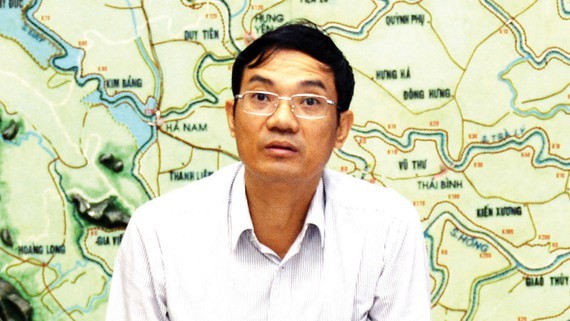 Mr. Vu Xuan Thanh
Mr. Vu Xuan Thanh


